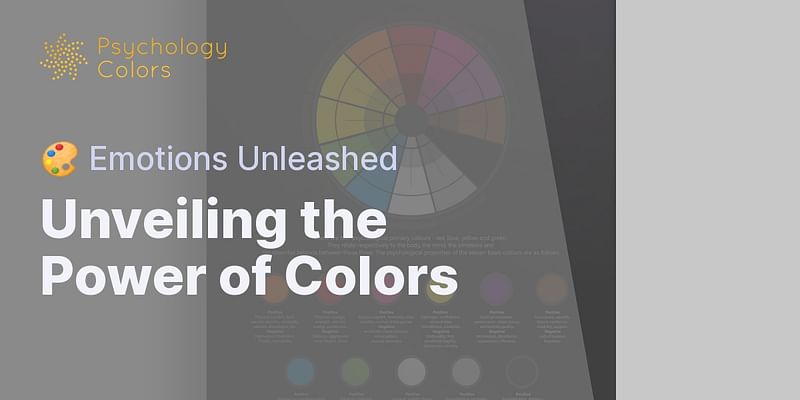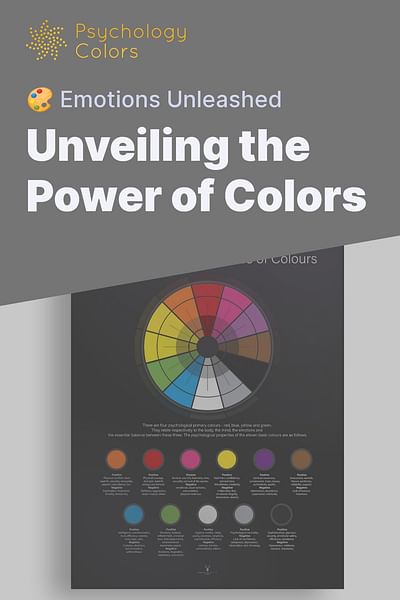Geraldine Abshire, Ph.D., is an experienced clinical psychologist with a focus on color therapy treatments. Her expertise extends to addressing various mental health issues such as anxiety, depression, and PTSD through the unique application of color therapy. As a certified yoga teacher, she seamlessly blends mindfulness and meditation techniques into her therapeutic sessions.
Hey there! I'm Dr. Maria Rodriguez, a clinical psychologist specializing in color psychology. Today, I'm here to shed some light on how colors can evoke emotions and feelings. It's a fascinating topic, so let's dive right in!
Colors have a profound impact on our emotions and can evoke a wide range of feelings. This is because colors have the power to stimulate our brain and influence our mood. Different colors have different psychological effects, and understanding these effects can help us better understand ourselves and others.
Let's start with warm colors like red, orange, and yellow. These colors are known to be energizing and can evoke feelings of warmth, excitement, and passion. They can also increase our heart rate and make us feel more alert. That's why you often see these colors used in advertising to grab your attention!
On the other hand, cool colors like blue, green, and purple have a calming effect. They can evoke feelings of relaxation, tranquility, and serenity. These colors are often associated with nature and can create a sense of harmony and balance. That's why you might find yourself feeling more peaceful when surrounded by shades of blue or green.
Now, let's talk about the emotional impact of colors. Colors can evoke specific emotions based on our personal experiences and cultural associations. For example, red is often associated with love and passion, but it can also symbolize danger or anger. Similarly, yellow is often associated with happiness and optimism, but it can also evoke feelings of caution or anxiety.
It's important to note that the emotional impact of colors can vary from person to person. We all have unique experiences and associations with different colors, so what might evoke a certain emotion in one person may not have the same effect on another.
Color personality tests, like the ones we offer here at Psychology Colors, can help you understand your personal associations with different colors and how they relate to your personality. These tests use color coding to assess your preferences and provide insights into your emotional tendencies and personality traits.
So, whether you're drawn to vibrant reds or calming blues, colors have a powerful influence on our emotions and feelings. Understanding the connection between color and mood can help us create environments that promote positive emotions and enhance our well-being.
I hope this explanation has shed some light on how colors evoke emotions and feelings. If you're interested in diving deeper into the world of color psychology, be sure to check out our color personality tests and explore the fascinating relationship between color and personality.
Remember, colors have the power to influence our emotions, so surround yourself with the colors that make you feel good and embrace the vibrant world of color psychology!















